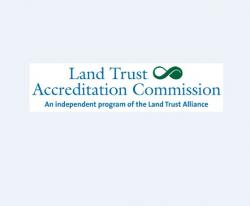Programs: The organization currently maintains 45 properties and conservation easements totaling over 1,115 acres on and around kiawah island, south carolina. The organization maintains these properties and easements for the expressed purpose of keeping the properties in their natural undeveloped state for perpetuity. The organization has stewardship responsibility for all conservation properties including the maintenance of a maritime forest demonstration outfitted with educational signage about the island plant life. The organization has been accredited by the land trust accreditation commission since february 16, 2017. This important distinction independently confirms that the organization operates according to the highest standards in land conservation and nonprofit management. In particular, it assures that the organization fulfills its responsibility to conserve its land and easements in perpetuity. The organization's habitat improvement plan has an objective to consistently foster the efforts of all kiawah island property owners in implementing and maintaining optimum habitat to support the future of our native wildlife. The organization, working in concert with other organizations on kiawah island, provides resources, landscaping tips, access of professionals and assessment forms to assist owners with this plan.
the organization conducts numerous research studies to educate the residents of kiawah island, south carolina, as well as to further its mission. Bobcat study the kiawah conservancy, in partnership with the town of kiawah island, south carolina, initiated the bobcat gps study in 2007. The study is ongoing and a total of 75 bobcats have been captured and fitted with gps collars (5 in 2007, 8 in 2008, 10 in 2009, 6 in 2010, 8 in 2011, 9 in 2012, 6 in 2013, 6 in 2014, 6 in 2015, 6 in 2016 and 5 in 2017 ). More than 30,000 individual bobcats locations have been obtained to date. As data is compiled, the conservancy is able to learn more about how bobcats move around the island and the types of habitat they prefer. By pinpointing specific areas or habitat types that are of vital importance to bobcats (especially for denning and daytime resting), the conservancy has the ability to enhance its land preservation planning on kiawah island. The town of kiawah island uses gps data to upgrade its bobcat management guidelines for the island. Bird banding and understory preservation the kiawah island banding station (kibs) is supported by the kiawah conservancy and operated by the town of kiawah island. Annual banding and monitoring efforts include: fall migration monitoring fall migration monitoring began in 2009 at the west end of kiawah island at the kibs. In 2015, an additional station was created at the east end of kiawah island. Mist nets are operated by the town wildlife biologist and seasonal interns supported by the kiawah conservancy. The nets are operated daily from mid-august through november. They are opened 30 minutes before sunrise and closed approximately six hours later. Winter marsh sparrow banding marsh sparrow banding began during the winter of 2011-12 with the objective of determining habitat requirements, site fidelity, relative abundance and distribution of the species. The birds are flushed into mist nets at high tide roosts in the salt marsh. The target species are seaside sparrows, nelson's sparrows and saltmarsh sparrows. The kiawah conservancy is supporting a stable isotope research program to learn more about the breeding range of marsh sparrows (in conjunction with the town of kiawah wildlife biologist and coastal carolina university.
the production, publication, and distribution of education material and the ongoing maintenance of the organization's website; the purpose of which is to educate property owners, building contractors, architects, landscapers, and etc. , about the importance of preserving the natural environment of kiawah island. "naturally kiawah" is a semi-annual publication to all residents of kiawah island and the supporters of the organization. It communicates key initiatives, upcoming educational events, conservation and preservation education and other elements in support of the organizations mission. Other publications include "landscaping for legacy" a document intended to help residents to understand the island and how to best maintain its exceptional character. Resources on landscaping, understory maintenance, lagoon maintenance, beach and dune preservation, native plant identification and invasive species education. Additionally, the kiawah island conservancy produces a host of brochures in support of its conservation mission.




